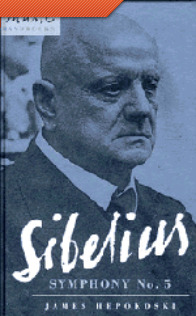

Some recordings use an actual voice for the bard in the end, but many use the cor anglais version too.
#SIBELIUS 5 ANALYSIS FULL#
The glorious oboe and cor anglais solos are emphasised by a full set of strings, which Sibelius utilises to the maximum here. The bubbling string movement adds interesting rhythmic movement, which is quite unsteady at times. The mood is somewhat sombre and reflective, with the music capturing Karl Knutsson reminiscing in his castle whilst being entertained by a minstrel.


Sibelius uses the cor anglais to represent the voice in the movement. The second movement, Ballade, is a reflection of a song sung by the bard. After a reprise of the quiet opening, the Intermezzo concludes poignantly. Sibelius’ rich textural writing in this movement allows the melody to soar above the excitable accompaniments.
#SIBELIUS 5 ANALYSIS PLUS#
Primarily led by the horns and trumpets, the famous melody is accompanied by off-beats from the rest of the orchestra plus a tambourine. Set as a spritely Allegro march,the movement portrays a militaristic atmosphere of the marching contingents. Technically the only original movement of music to make it in the suite, the opening Intermezzo movement is perhaps the most well-known. The suite is split into three movements, which are either exact copies of the music from Karelia Music, or are slightly recomposed from fragments of the original. Sibelius did not set out to compose virtuosic orchestral music, but instead explore folk stories and culture. The suite is celebrated for its poignant use of folk tunes and aesthetics. “You couldn’t hear a single note of the music – everyone was on their feet cheering and clapping.” At the premiere of the suite, Sibelius was unhappy with the response: Sibelius also conducted the Karelia Suite just ten days later. The original version had its premiere in November 1893 and was commissioned by the Viipuri Students’ Association. Jean Sibelius’ Karelia Suite is a small collection of pieces that were in the much longer Karelia Music.


 0 kommentar(er)
0 kommentar(er)
